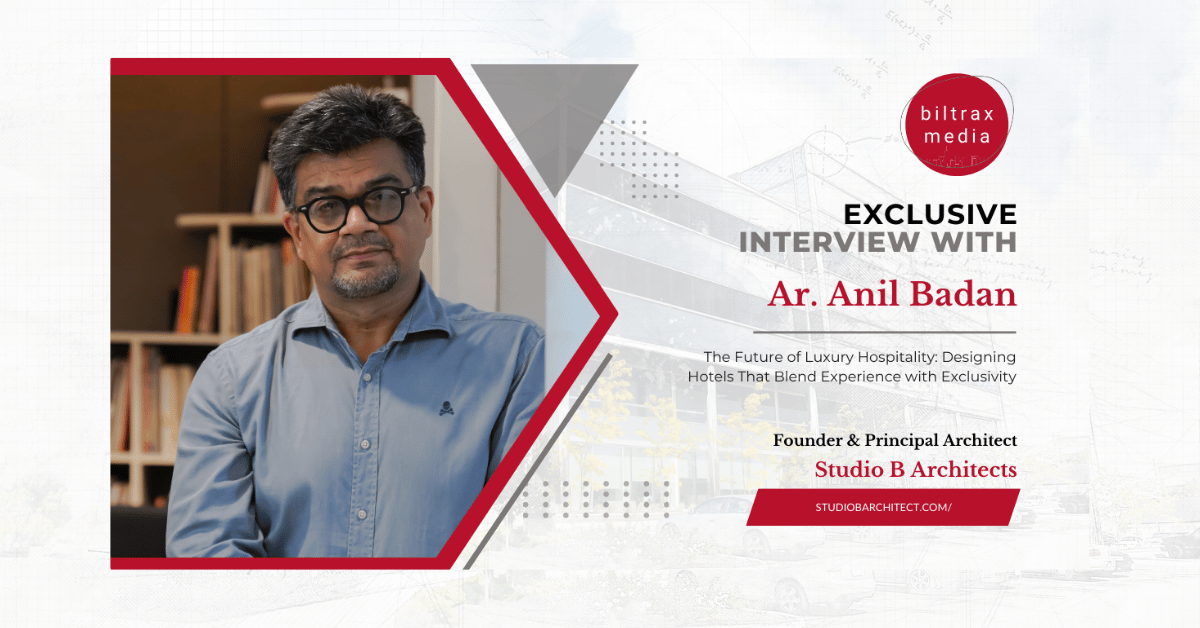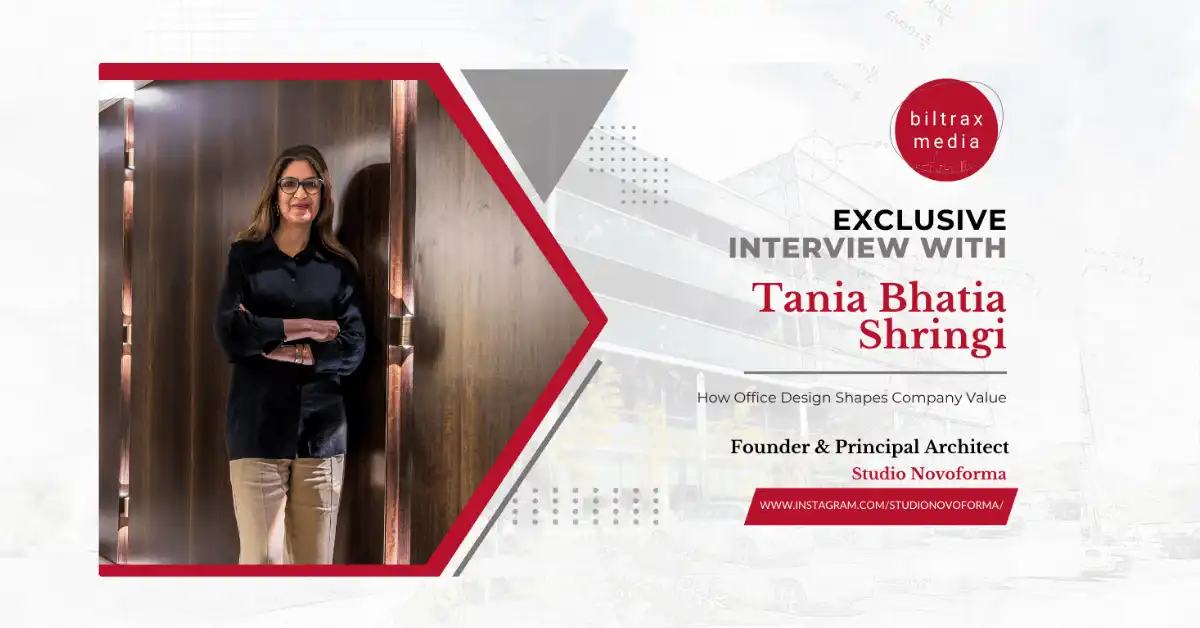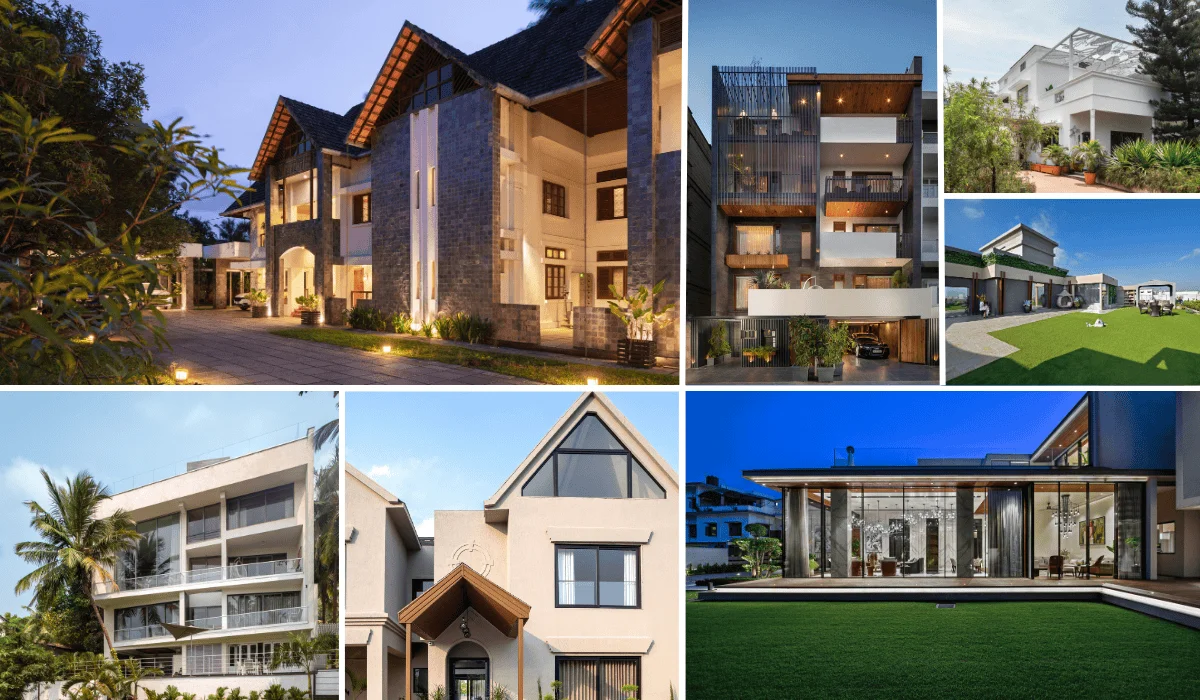KariGhars, an interior design firm based in Bangalore, places a strong emphasis on Indian artisanal craftsmanship, carpentry, and masonry work. The firm strongly believes in creating spaces that are not only aesthetically pleasing but in crafting spaces that have a positive impact on their users. They emphasize the crucial role of materials in defining a space’s ambiance and functionality, whether it’s the warmth of wood in a cozy living room or the sleekness of steel in a contemporary kitchen.
In an exclusive interview with Biltrax Media, the founder of KariGhars, Mr. Abhishek Chadha discusses how interior design influences the material market, the connection between cost-effective and sustainable materials, upcoming trends, challenges in the material markets, and how the firm integrates these trends to create versatile user experiences.
How do you see the relationship between interior design and the material market? In what ways do they influence each other?
As an interior designer, I view the relationship between interior design and the material market as deeply interconnected. The material market plays a pivotal role in shaping the possibilities and aesthetics of interior design. New materials, finishes, and innovative products continually inspire and expand our design horizons, allowing us to create spaces that are both functional and visually appealing. Simultaneously, the demand for specific materials driven by design trends can influence the material market, encouraging manufacturers to produce and supply materials in response to the evolving needs of designers and their clients. This symbiotic relationship ensures that interior design remains a dynamic and ever-evolving field, constantly driven by the latest material innovations and design trends.
From your perspective, what are the key materials that have gained prominence in interior design in recent years?
In recent years, sustainable and eco-friendly materials, such as reclaimed wood, recycled metal, and natural textiles, have become increasingly popular as we prioritize environmentally responsible design. Additionally, matte finishes and earthy tones have made a comeback, offering a sense of warmth and sophistication to spaces. Smart materials with integrated technology, like self-cleaning surfaces and energy-efficient glazing, are also on the rise, adding convenience and energy efficiency to our designs. These material trends reflect a growing emphasis on sustainability, comfort, and functionality in contemporary interior design.
What role do sustainability and environmental considerations play in the selection of materials for interior design projects today?
Clients are increasingly mindful of the ecological impact of their spaces, and as an interior designer, I prioritize the use of eco-friendly, locally sourced, and recyclable materials. This not only reduces the carbon footprint of a project but also contributes to healthier indoor air quality. Sustainable choices, such as low-VOC paints and reclaimed materials, not only align with the ethical responsibility to protect the environment but also enhance the overall aesthetics and functionality of the space. In today’s design landscape, sustainability is not just a trend but a fundamental principle guiding material selection and the very essence of good design.
Could you share any examples of interior design projects where the choice of materials significantly impacted the overall design and aesthetics?
The impact of material choices on overall design isn’t confined to just a few of our projects, it’s an integral aspect of every endeavor we undertake. We recognize that the choice of materials significantly shapes the design and aesthetics of a space. By carefully selecting materials for each project, we ensure that they align with the overarching design concept and the specific needs of our clients. Whether it’s the warmth of wood in a cozy living room or the sleekness of steel in a contemporary kitchen, materials play a pivotal role in defining the ambiance and functionality of a space. Our commitment is to seamlessly integrate materials that not only enhance aesthetics but also elevate the overall user experience, creating interiors that resonate with both beauty and practicality.
How do economic factors, such as material costs and availability, affect material choices in interior design? Are there any cost-effective alternatives that are gaining popularity?
Amidst escalating material costs or scarcity, designers often opt for cost-effective alternatives. Engineered wood products such as MDF and plywood have gained popularity as substitutes for solid wood in cabinetry and furniture due to their cost-efficiency and versatility. Furthermore, faux finishes and laminates can replicate the appearance of costly natural materials like marble or stone without the hefty price tag. In response to economic constraints, we, as designers, consistently seek innovative and budget-friendly options. Our primary focus is to identify the most durable materials with long-lasting quality by exploring various brands and types, always with the commitment to deliver optimal results while staying within budgetary considerations.
How important is the lifecycle of materials in your decision-making process? Are there specific materials you prefer for their durability and long-term sustainability?
The lifecycle of materials is a critical consideration in my decision-making process. I prioritize materials known for their durability and long-term sustainability. For instance, I would choose hardwoods for flooring and furniture because of their longevity and the potential for refinishing, extending their lifespan. I also favour materials like recycled glass and aluminum, which reduce wastage and also offer superior durability. Sustainable materials that can withstand wear and tear over time are not only environmentally responsible but also ensure that the design remains aesthetically pleasing and functional for years to come, enhancing the overall value of the interior space.
Are there any emerging trends or innovations in interior design materials that you find particularly interesting or impactful?
I am always on the lookout for emerging trends as it keeps us, as a practice, more grounded and true to our results. I find biophilic materials, like wood and stone, captivating for their potential to improve well-being by connecting spaces with nature. Sustainable materials from recycled sources and agricultural waste offer strength and eco-friendliness, reshaping our industry. Even upcoming materials like mycelium and responsive smart materials add an exciting dimension to creative and environmentally conscious design. These trends promise to revolutionize interior design by allowing us to craft beautiful, functional, and health-conscious interiors that are also sustainable.
What challenges do architects and interior designers face when trying to balance aesthetics, functionality, and sustainability in material selection?
Navigating through the intricacies of aesthetics, functionality, and sustainability in material selection presents a formidable challenge for interior designers today! Finding materials that fulfill all design criteria without compromising can be tough. Some materials excel in aesthetics and sustainability but lack durability, while others are functional and durable but less eco-friendly. Cost is another hurdle, as sustainable materials often come at a premium, particularly for large projects. Educating clients about the value of sustainability can also be a struggle, as many prioritize cost and aesthetics over environmental impact. Nonetheless, prioritizing sustainability is crucial to lessen the environmental footprint of our built environment.
Looking ahead, what do you believe will be the biggest challenges and opportunities for architects and interior designers regarding material choices and sustainability in the coming years?
Looking ahead, the primary challenges for architects and interior designers regarding material choices and sustainability will be the escalating cost of sustainable materials and the lack of client awareness and standardized measures. The rising cost of sustainable materials may pose difficulties, particularly for budget-driven projects. Convincing clients to opt for sustainability can be an uphill battle without proper understanding and awareness.
However, there are also significant opportunities on the horizon. The increasing demand for sustainable design is a promising avenue to market expertise and attract environmentally conscious clients. The continuous development of affordable sustainable materials and the emergence of digital tools for assessing sustainability offer valuable solutions. In navigating these challenges and seizing opportunities, architects and interior designers must foster innovation and collaboration to create cost-effective, aesthetically pleasing, and sustainable spaces.
In your opinion, what advice would you give to aspiring interior designers and architects when it comes to making informed material choices for their projects?
As an interior designer, I believe informed material choices are paramount for aspiring designers and architects. Start by understanding the space’s purpose and user needs, considering factors like activities and wear and tear. Opt for durable materials that suit the space’s function. Aesthetics matter too; select materials that align with the desired atmosphere and overall design.
Budget is a key consideration. While sustainability may come at a cost, affordable options exist. Shop around, compare prices, and explore local materials to reduce environmental impact through decreased transportation. Seek local suppliers for sustainable options, striking a balance between aesthetics, functionality, and sustainability.
KariGhars
Website: http://www.thekarighars.com/
Contact: +91 70227 25656
Disclaimer: The information contained herein has been compiled or arrived at, based upon information obtained in good faith from sources believed to be reliable. All such information and opinions can be subject to change. The image featured in this article is for representation purposes only and does not in any way represent the project. If you wish the article to be removed or edited, please email editor@biltrax.com.
Discover more from Biltrax Media, A Biltrax Group venture
Subscribe to get the latest posts sent to your email.






















